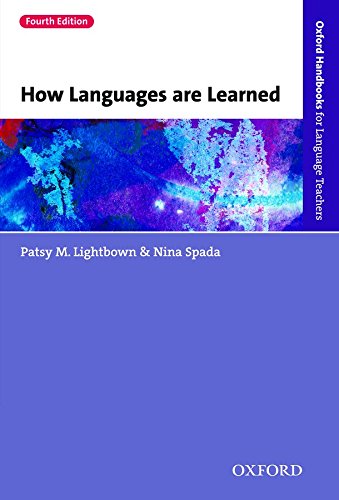How Languages Are Learned (Oxford Handbooks for Language Teachers) epub
Par winders james le mercredi, janvier 4 2017, 03:02 - Lien permanent
How Languages Are Learned (Oxford Handbooks for Language Teachers). Patsy M. Lightbown, Nina Spada

How.Languages.Are.Learned.Oxford.Handbooks.for.Language.Teachers..pdf
ISBN: 0194422240,9780194422246 | 242 pages | 7 Mb

How Languages Are Learned (Oxford Handbooks for Language Teachers) Patsy M. Lightbown, Nina Spada
Publisher: Oxford University Press, USA
Padden, Interaction of Morphology and Syntax in American Sign Language (1988). How Languages Are Learned (Oxford Handbooks for Language Teachers) reviews. How Languages Are Learned (Oxford Handbooks for Language Teachers S.) How Languages Are Learned (Oxford Handbooks for Language Teachers S.) New. This thoroughly updated third edition presents the main theories of language acquisition, considering their bearing on language teaching. Battison, ed., Sign Language and the Deaf Community (1980); C. Secondly, web 2.0 language learning communities offer learning materials in various languages, often structured in learning pathways (although far from perfect), while this is not common in SNS groups for language socializing. In 1620, Juan Pablo Bonet published Reducción de las letras y arte para enseñar a hablar a los mudos ('Reduction of letters and art for teaching mute people to speak') in Madrid. Ohlt: How Languages Are Learned, Third Edition: Oxford Handbooks for Language Teachers. 2Let us not forget though that the "buzz" around social media is also linked to the fact that it encompasses not a single tool but a set of tools, and that the possibilities for language learning and teaching are multiplied accordingly. Stokoe, Semiotics and Human Sign Languages (1972); C. Resources used for this post: Lightbown, P. Ǩ�類 : ペーパーバック. It discusses the effects of factors such as intelligence, personality, and age.